Anshupa Lake in Odisha is located 50 kms from Cuttack and situated in the middle of the state highway connecting Athagarh and Banki block of Cuttack district. Spread across 382 km, Ansupa is the largest fresh water lake in Odisha.
The lake derives its name from its shape which is like a horseshoe (Ansupa). During the rainy season the many hues of the water makes for a beautiful sight and the presence of the migratory birds during winter adds to the vibrancy of the lake. Boating facilities available at the lake are an added attraction.

Anshupa Lake in Odisha- History
The ruins of an ancient fort on top of the Saranda hill adjacent to the lake adds to the charm of the place and provides a panoramic view of the lake. There is no definite history on the origins of the fort, one of the popular legends is that the King of Saranda had chosen to build a fort at the hilltop for his safety. The Baruda Ghar (ammunition store), two wells and metal door entrance to the fort along with a few structural remnants are all that remains today.
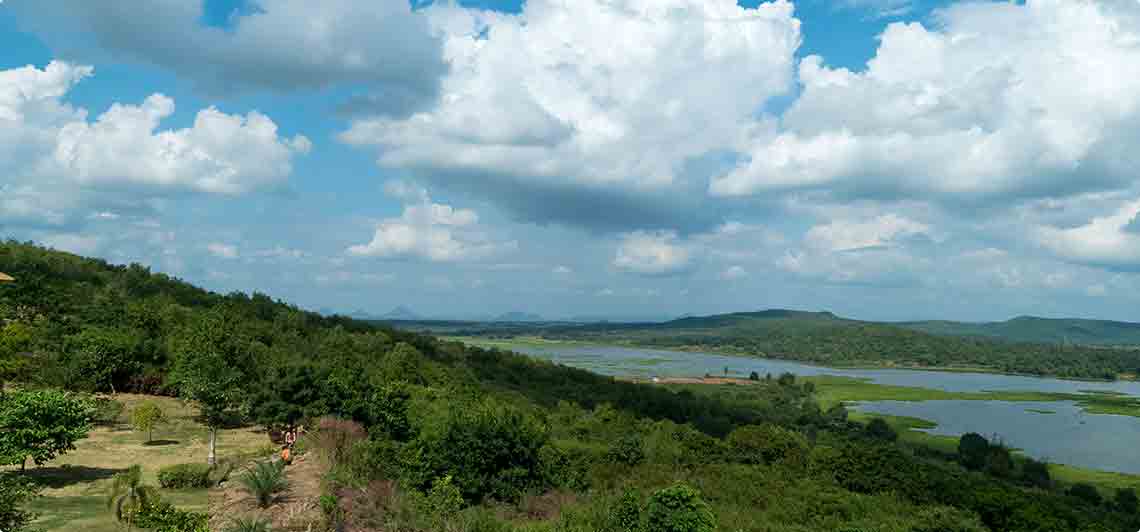
Nearby Destinations- Must visit places around Anshupa Lake in Odisha
Nandankanan
The Heavenly Abode of The Inhabitants

Located 15 KM from Bhubaneswar, Nandankanan literally means “celestial garden” came into existence on the 29th December 1960. However strange it may seem, the zoo came up as afterthought. During the World Agriculture Fair held in New Delhi in 1960, Odisha pavilion displayed animals from Odisha in its stall. Once the fair was over, the realization dawned that the animals needed a home. After a lot of deliberations, the current site located in Jujhagarh Forest block was selected.
Unlike other zoos, Nandankanan is built right inside the forest and set amidst natural environment. The animals are housed in spacious enclosures which replicate the habitat they live in, enabling them to settle down and lead a healthy life.
Nandankanan being one of the most prominent zoological parks in the world and has many firsts to its credit.
It is most famous for its white tigers and is the host zoo for the species. Some of the other firsts are:-
It is the first zoo to breed the endangered Gharials in captivity.
School children are invited to participate in competition like sit and draw and other activities like naming of tiger cubs during the wildlife week, elephant day and wetland day.
Botanical Garden
The adjoining Botanical Park was opened to public in the year 1963. In the year 1981-1982 it was renamed as Nandankanan Zoological and Botanical Park under the recommendation of the Odisha Legislative Committee on Estimates. The botanical garden set besides the Kanjia lake houses many rare species of plants and trees and complements the zoological park on the other side of the lake perfectly.
Tribal Museum near Anshupa Lake in Odisha
The Store House of The Vibrant Tribal Culture

The Tribal Museum located at the CRP Square in Bhubaneswar, was established in 1953. Today the museum is a major site of tourist interest as it gives an insight into the life of a tribal. On display are immaculate replicas of tribal huts of various tribal communities and artefacts collected from different tribal groups in Odisha.
The “Museum of Tribal Arts and Artefacts” popularly known as Tribal Museum was established in the year 1953. Odisha has over 60 tribal communities adds significance to this unique museum which is the reason and it is also known as “Museum of Man”.
The aesthetically built museum is a must visit if you are in Bhubaneswar. For tourist’s one pertinent point – a brief about culture of Odisha is essential though not binding if you are visiting the museum helps you understand the displays just a bit better.
On display are the way of life of a tribal in the region which includes their attire, traditions, ornaments, food habits. The museum also displays replicas of Tribal dwellings and artefacts.
The museum displays elements of anthropological interest and gives an insight on the different stages of evolution of tribal cultures.
The library here is also a great source of information and documentation of tribal life.
There are shops in the museum premises selling souvenirs too & the compound is equipped with a food court, making it a pleasant outing with friends and family alike.
Udaygiri & Khandagiri Caves near Anshupa Lake in Odisha
A Relic of A Forgotten Chapter of History

The caves located 7KM from Bhubaneswar takes us back in time and is probably the only recorded history of era that is still shrouded in mystery. Built somewhere around the 2nd century BC by King Kharavela of the Meghavahana dynasty, widely regarded as the most powerful king in the annals of history of Odisha, these ancient rock cut caves were first discovered by a young British Officer Andrew Sterling in the 19th century AD.
The caves built on the Kumari mountain range were built for the Jain monks and offered them a place to stay and meditate. Out of the one hundred and seventeen caves that were built originally only thirty-three survive till this day. Eighteen caves are located in the Udaygiri hill and fifteen in the Khandagiri hill.
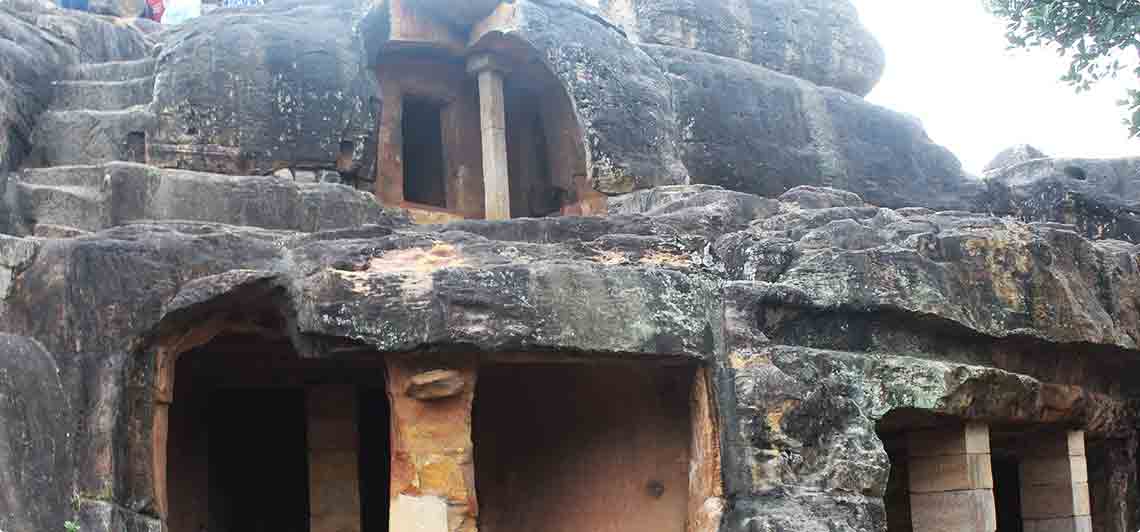
The Archeological Survey of India (ASI) is in charge of the Udaygiri caves and it’s a ticketed monument. The major attractions of the Udaygiri caves are
- Hathigumpha : or the elephant cave as its known bears the inscriptions of King Kharavela. The seventeen lines mention his many conquests and his way of governance.
- The Rani Gumpha : or the Queen cave; is a double-storeyed structure with beautiful carvings. Exquisite carvings apart, the cave is known for its acoustic characteristics.
- The Ganesh Gumpha : the Ganesha Cave is known for its carvings of Jain Tirthankaras and other sculptures. The carving of Lord Ganesha and two elephants were added much later.
- The Vyaghara Gumpha : or the Tiger cave is so-called because the entrance is shaped like the head of the tiger and the door shaped like a tiger’s throat
The caves located at the Khandagiri hills doesn’t come under the purview of the ASI. The major caves of Khandagiri are
- Barabhuji Gumpha features the twelve armed Sasana Devi’s facing each other along with Tirthankar sculptures.
- Trushula Gumpha – One can find the twenty-four Jain Teerthankar’s carved on the walls of the cave. The sculpture of TirthankarRishab Dev stands out.
- Ambika Gumpha – The Yaksha and Yakshini’s of each Tirthankar is carved on the walls of the cave.
The most extraordinary achievement of these beautifully carved caves is that each cave and sculpture was painstakingly carved by hand using basic tools. The architecture and exquisite carving is of top drawer. The carvings drew references from mythology and history. One of the most poignant section of carving is the depiction of the Kalinga War, where women and teenagers are depicted fighting to save their motherland from Ashoka’s army.
The caves served as residences for the Jain monks and were equipped with water source in form a small canal which passes through every cave, an ingenious communication system through holes, a place to light the lamps and the tilted flooring which served as a head rest. Many of the caves are double storeyed and its believed that the upper chambers of the caves were used for deep meditation.
Regional Museum of Natural History near Anshupa Lake in Odisha
The Repository of The State’s Bio diversity

Regional Museum of Natural History at Bhubaneswar was set up in 2004. It is the only museum of its kind in the Eastern region of the country. The museum,under the Ministry of Environment and Forests, Govt. of India, New Delhi.There are various galleries showcase the vibrant biodiversity of Odisha, the North-East, the Andaman and Nicobar Islands, African forests and even Madagascar.
The highlight of the museum is undoubtedly the huge skeleton of Baleen Whale which is the biggest in the country. Apart from the skeleton of Baleen Whale there are the skeleton of the Toothed Whale, Elephant and Rhinoceros, skulls of various species of whales, rhinos, elephants, tigers and various other animals which attract the visitors.
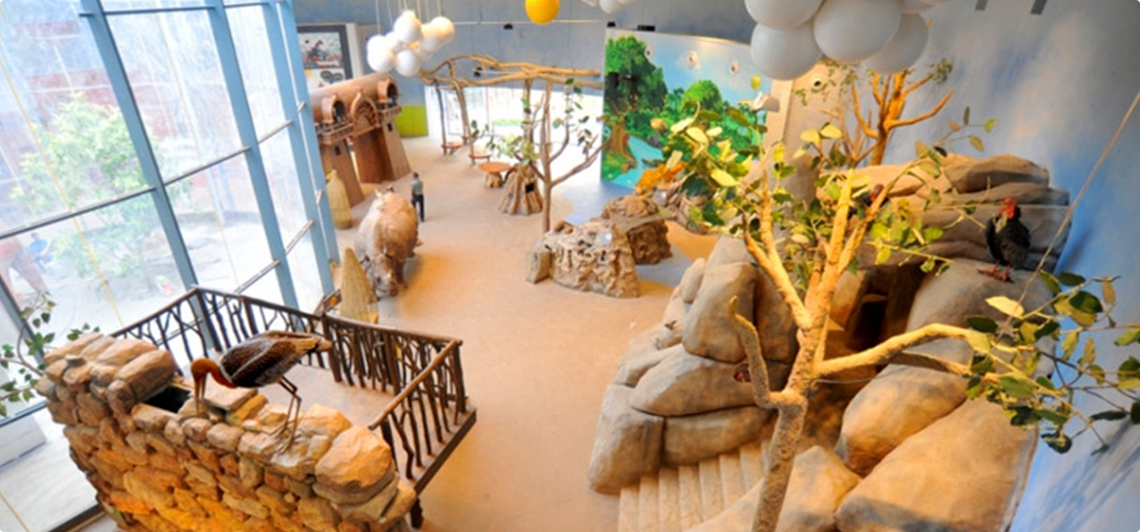
The rare fossil of the ‘egg’ of now extinct Elephant bird is one of its kind exhibit in the country that one can find in the museum. The skeletons of reptiles and smaller mammals are of particular interest for the students interested in the life sciences.
There is also a children’s gallery equipped with interactive displays, which are popular amongst the children.
The auditorium and the interaction centres are used for various activities and attracts a host of people.
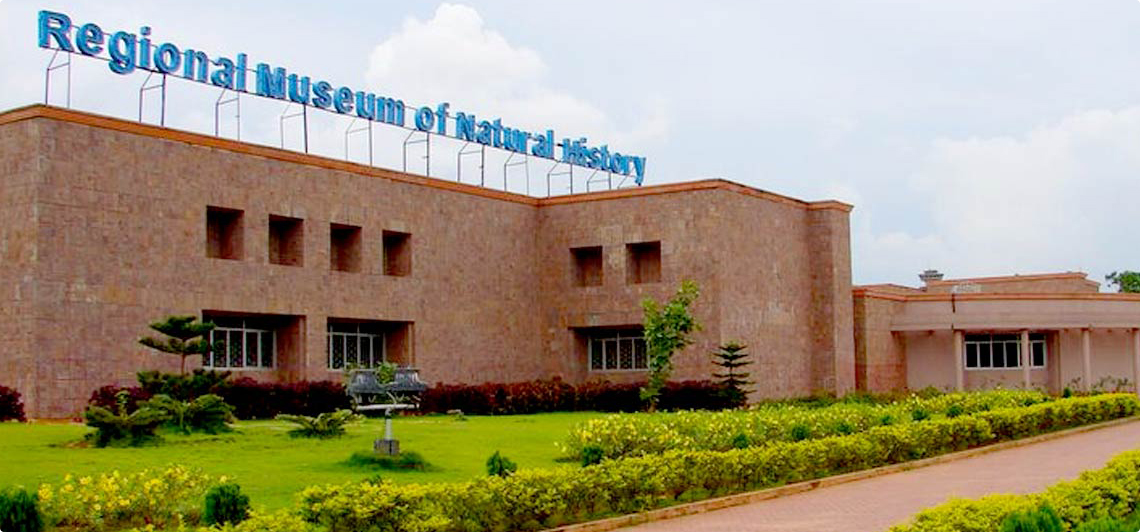
Planetarium near Anshupa Lake in Odisha
Reach Out For The Stars & The Moon
Bhubaneswar is one of the ten cities in India which boasts of a Planetarium. The planetarium was built by the Science and Technology Department of Odisha Government in 1990 with the aim for creating awareness about activities like night sky viewing through audio visual programs and poster shows. It also displays various astronomical devices.

Celestial objects like moon, stars, planets and the entire galaxy fascinates children and adults alike. The planetarium at Bhubaneswar gives us an opportunity to relive our fascination and come out with a better understanding of our Galaxy.
The planetarium is named after famous Odia astronomer Mahamahopadhyaya Chandrasekhar Singh Harichandan Mohapatra Samanta popularly known as Pathani Samanta. He was known as the naked eye astronomer and his ground breaking work, which he penned in his book Siddhanta Darpana finds a special mention in the prestigious American and European press of 1899.
It’s a place where one can gather knowledge about the universe, sun, and other planets. There are different shows scheduled in Odia, Hindi and English language, so schedule your show to match with your preferred language.

Odisha Crafts Museum “Kala Bhoomi” near Anshupa Lake in Odisha
A Tribute To The Rich Legacy of Art & Craft of Odisha
The museum celebrates the craftsmanship of artisans by putting on display their breath-taking masterpieces. Divided into 2 blocks, the museum has a display area and a live section. The display area focuses on galleries about Handicrafts and Handlooms from around the state while the live section is equipped with an outdoor amphitheatre as well as separate workshop zones.

Guided tours & facilities
While at Odisha Crafts Museum- Kala Bhoomi, be sure to experience the below: Guided Tours- Be part of their daily guided tours to experience the museum in a wholesome and informative manner. The timings are as follows: 11 am to 12 pm- English tour; 12:30 pm to 1:30 pm- Hindi tour; 3:00 pm to 4:00 pm- Odia tour Canteen- Get a chance to have local and organic Odia food in the canteen on campus Workshops- The hands-on workshops give you a chance to not only see museum pieces but also experience them by making products on your own! Trails- The experience driven trails give people a chance to go through the museum in a completely different avatar. Make sure you check the schedule before heading over to the museum. Children’s Play Area and amphitheatre- There is always something for different age groups at the museum. Watch out for the events that happen in the amphitheatre or simply indulge in a game of live sized snakes and ladders in the play area.

Odisha State Maritime Museum near Anshupa Lake in Odisha
A Reflection On The Glorious Maritime Tradition
The museum is by far millennium city Cuttack’s best tourist attraction. The maritime museum came up in the old dilapidated complex of “River Boat Construction and Repair Workshop” constructed during the British era. The workshop was renovated and renovated and converted into the present day Odisha State Maritime Museum in 2013.

The exhibits of the museum give an insight into the ancient Odisha’s famed maritime industry. On display are the tools used by the Sadhabas (or seafarers), age old navigation systems and its evolution.
The chief attractions are the wooden boat replica’s, the huge boat shed and the lathe which was the largest in Asia during its time. The addition of the 3D shows along with the aquarium section to the museum is a huge draw especially for the kids.
The museum located on the banks of River Mahanadinear Jobra along with its finely manicured and maintained lawns makes for a pleasant outing with family. The museum regularly conducts painting competitions for children regularly which attracts a lot of participants and the interactive initiatives adds to the feel good factor about the place. It also has an open air auditorium with a sitting capacity of 250 people.
Brief history about the River Boat Construction and Repair Workshop
The workshop was constructed as a pre-emptive measure by the British Administration to prevent the large scale disaster akin to the horrific famine of 1866 in Odisha which took the lives of scores of people.
The workshop was not restricted to manufacturing boats, it also looked after the inland water ways, irrigation projects and distribution of water.
Constructed by Mr. G.H. Faulkner then an Engineer with the British PWD Department, It was the only workshop of its kind under the Bengal Presidency of British India. Hence it was an important landmark.

Odisha State Museum near Anshupa Lake in Odisha
The Treasure Trove of The State’s Heritage

Dating back to 1932, the Odisha State Museum is the premier museum of the state. It is a repository that offers a glimpse into the history of Odisha’s across eras.
The sprawling museum complex houses a vast array of galleries each catering to a specific aspect of our history.
Epigraphy and numismatics gallery
The gallery displaying coins of the ancient and medieval age of Odisha is of particular interest for those who are inclined towards history and have numismatics as a hobby.
Natural History Segment
Showcases specimens of rare mammals and birds through evolution of the species. This gallery generates great interest amongst the children.
Natural History Segment
Showcases specimens of rare mammals and birds through evolution of the species. This gallery generates great interest amongst the children.

The Armoury Gallery
Displays weapons excavated in archaeology sites as well as personal weapons of donated to the museum by various Kings of Odisha.
The Manuscript Gallery
The museum has a rich collection of ancient manuscripts which are probably the highlight of the museum and one of the finest collections in the country. The museum even offers an online catalogue for the same. At the museum INTACH works on preserving ancient manuscripts engraved on palm leaves.
The Paika Gallery
The newest addition to the museum, the gallery focusses on the Paika revolution- The uprising of the Paika’s (the warrior clan of Odisha) against the British Imperialism.
There are other galleries like the Mining & Geology section, Archaeology, anthropology and Art and Craft galleries to name a few
Lingaraj Temple near Anshupa Lake in Odisha
The Symbol of Syncretisation of Odia culture
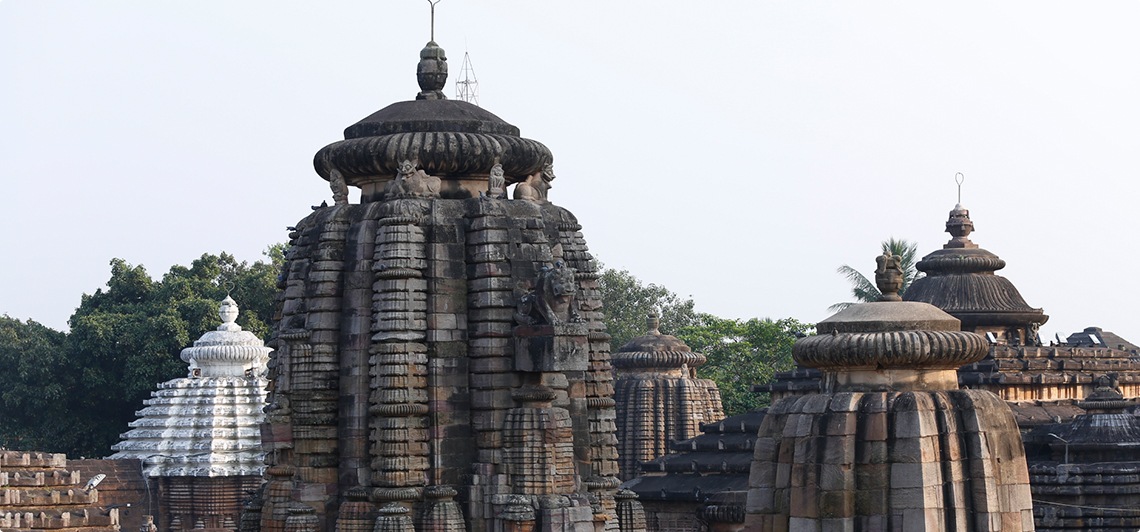
The imposing temple standing at 180 ft strikes awe and respect amongst its visitors. Built during the 11th century AD. The temple has been described as “One of the finest examples of purely Hindu Temple in India” by noted critic and historian James Fergusson (1808-1886). The temple marks the culmination of the temple architecture in Bhubaneswar which was the cradle of the Kalinga School of Temple Architecture. The sprawling temple complex has one hundred and fifty subsidiary shrines.
The temples are considered a masterpiece of Indian Architecture for its detailed plan, proportions, seamless joints, elegant craftsmanship and impressive dimensions. The temple can broadly be divided into four main halls. The Garba Griha (Sanctum Sanctorum), the Yajana Mandapa (the hall for prayers) the Natya Mandapa (dance and music hall) and the Bhoga Mandapa (where devotees can have the Prasad (offering) of the Lord). The exquisite carvings depicting chores of daily life, the activity centres, apart from being a place of worship makes the temple a place for social and cultural gathering, somewhat like what a modern community center.
Lingaraj is referred to as ‘Swayambhu” – (self-originated Shivling). Another important aspect of the temple is that it signifies the syncretisation of Shaivism and Vaishnavism sects in Odisha. The Shivling is known as Hari Hara. Perhaps the rising cult of Lord Jagannath which coincided with the completion of the Lingaraja Temple had a role to play.
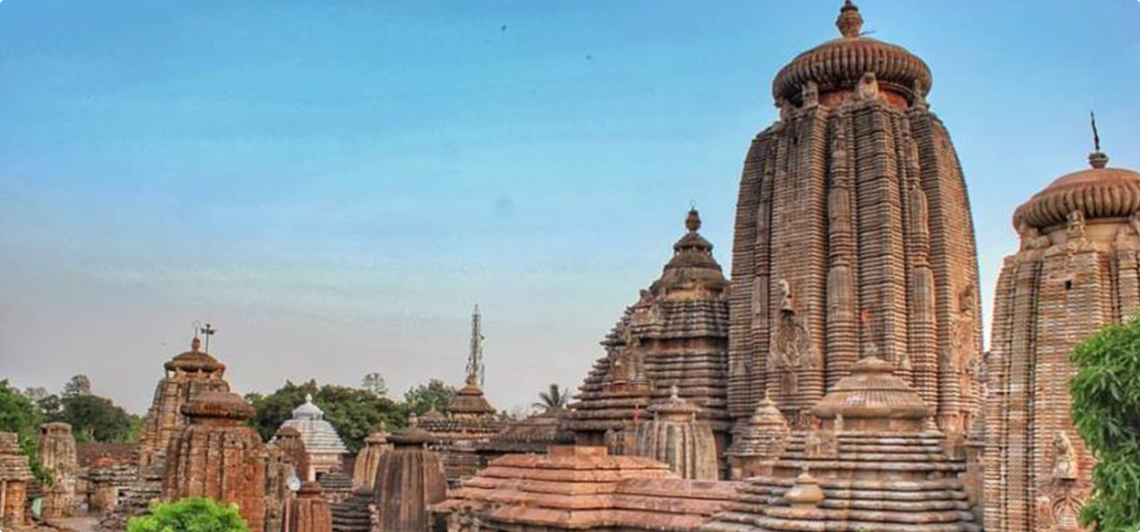
The temple is out of bounds for non-Hindus. However, one can get a view of the entire temple complex and take photographs from a raised platform erected specially for the tourists just outside the temple complex.
The other attraction of the temple is the Bindusagar Lake, located in the north side of the temple. The 1300 ft long and 700 ft wide lake is the centre of activities for the people of Old Town and is the hub of temple festivities.
On the western banks of Bindu Sagar, lies the beautiful garden of Ekamra Van named after the Hindu mythological texts where Bhubaneswar the capital city of Odisha was referred as Ekamra van or a forest of a single mango tree. The garden is home to a variety of plants traditionally associated with Hindu gods and goddess and having spiritual and medicinal significance.
Festivals
Shivaratri – held in the month of Feb/March – a festival where a woman fasts and prays for the long life of her husband and Rukuna Ratha Yatra held on Ashokastami (around April)- where the representative of Lord Lingaraja – Lord Chandrashekhara visits the maternal aunts home. Rukuna Ratha Yatra – literally means the chariot which doesn’t take a U-turn. Both these festivities draw huge crowds to the temple.
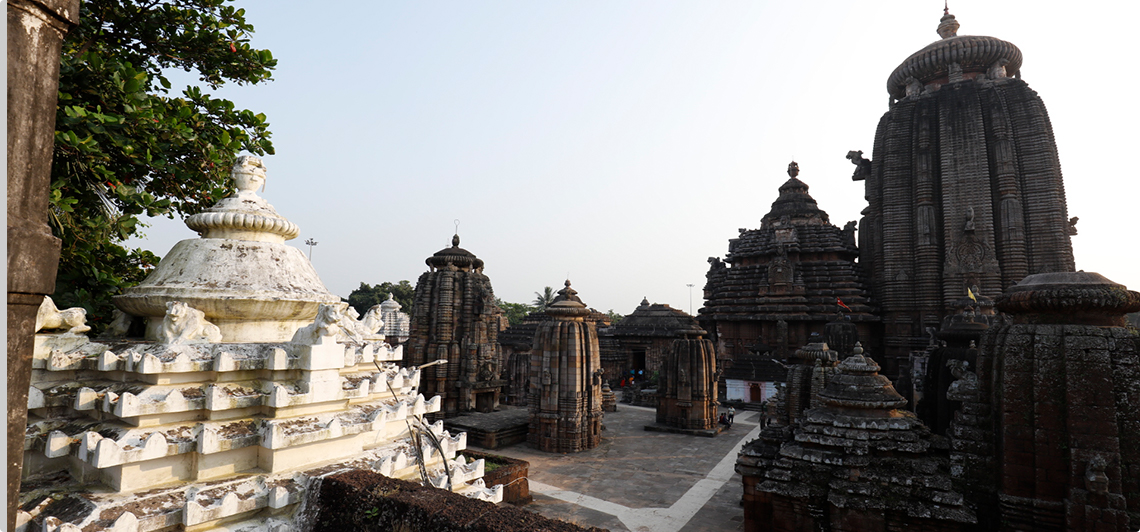
Ananta Basudeva Temple
The Devotion of A Queen & Her Perseverance
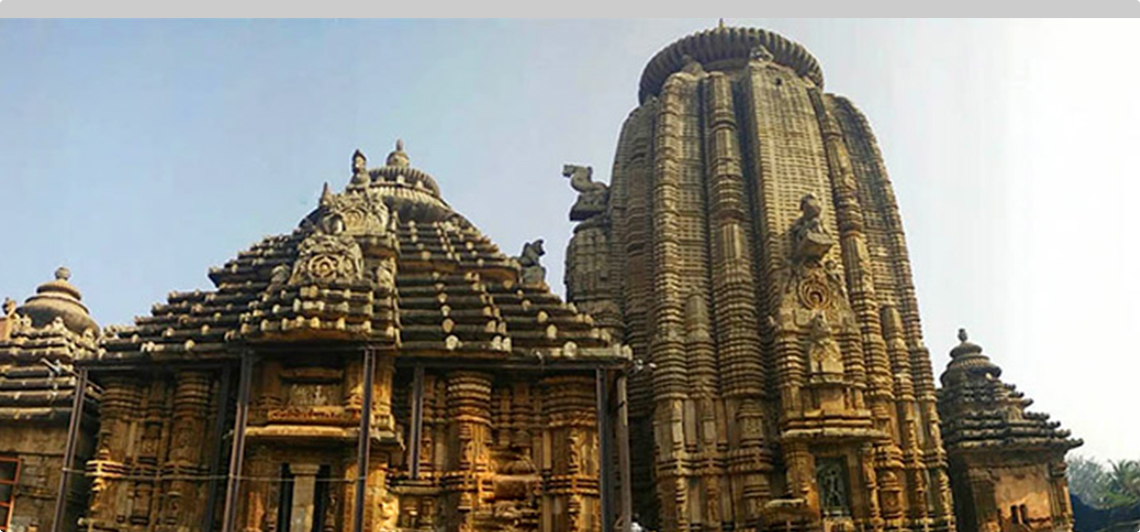
Built during the 13th Century AD, this beautiful temple along the bank of Bindu Sagar Lake largely follows the layout and structural form of the Lingaraj temple save for the carvings which represent Vaishnavism. Besides its architectural beauty, what makes this temple unique is that, it’s the only temple in Bhubaneswar dedicated to Lord Vishnu.
The temple was built by Queen Chandrika Devi the daughter of King Ananga Bhima Deva III in memorium of her husband who died on the battlefield in modern day West Bengal.
Queen Chandrika Devi was an accomplished dancer, musician and an artist. She was also a devotee of Lord Vishnu. The temple had a commemorative inscription of the Queen Chandrika Devi which is now preserved at the Royal Asiatic Society of Great Britain in London. Noted Archaeologist Padmashree Late Shri. Paramananda Acharya brought a cast of the inscription during his tenure as the Superintendent of the Odisha State Museum in the 1950’s and is on display/
Apart from Lord Vishnu, Lord Balabhadra and Goddess Subhadra complete the holy trinity of presiding deities. Unlike the Jagannath temple, Puri, the deities is complete in form.
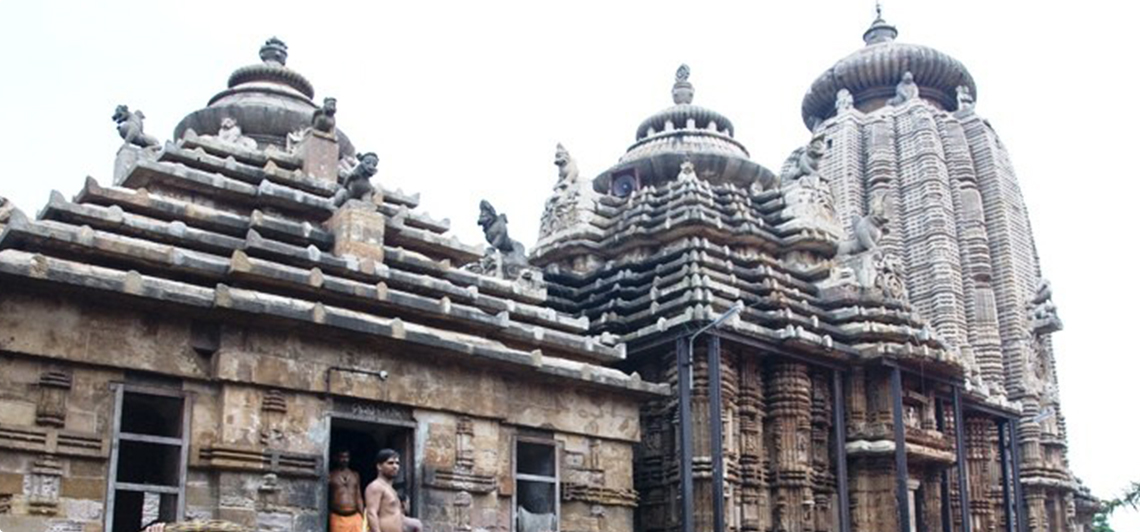
Like all Vishnu temples, the Bhoga Mandap (Prasad / Offering hall) is an integral part of the temple. The “Abhada” of the Ananta Basudev temple as it is called is much sought after by the locals as well as visitors